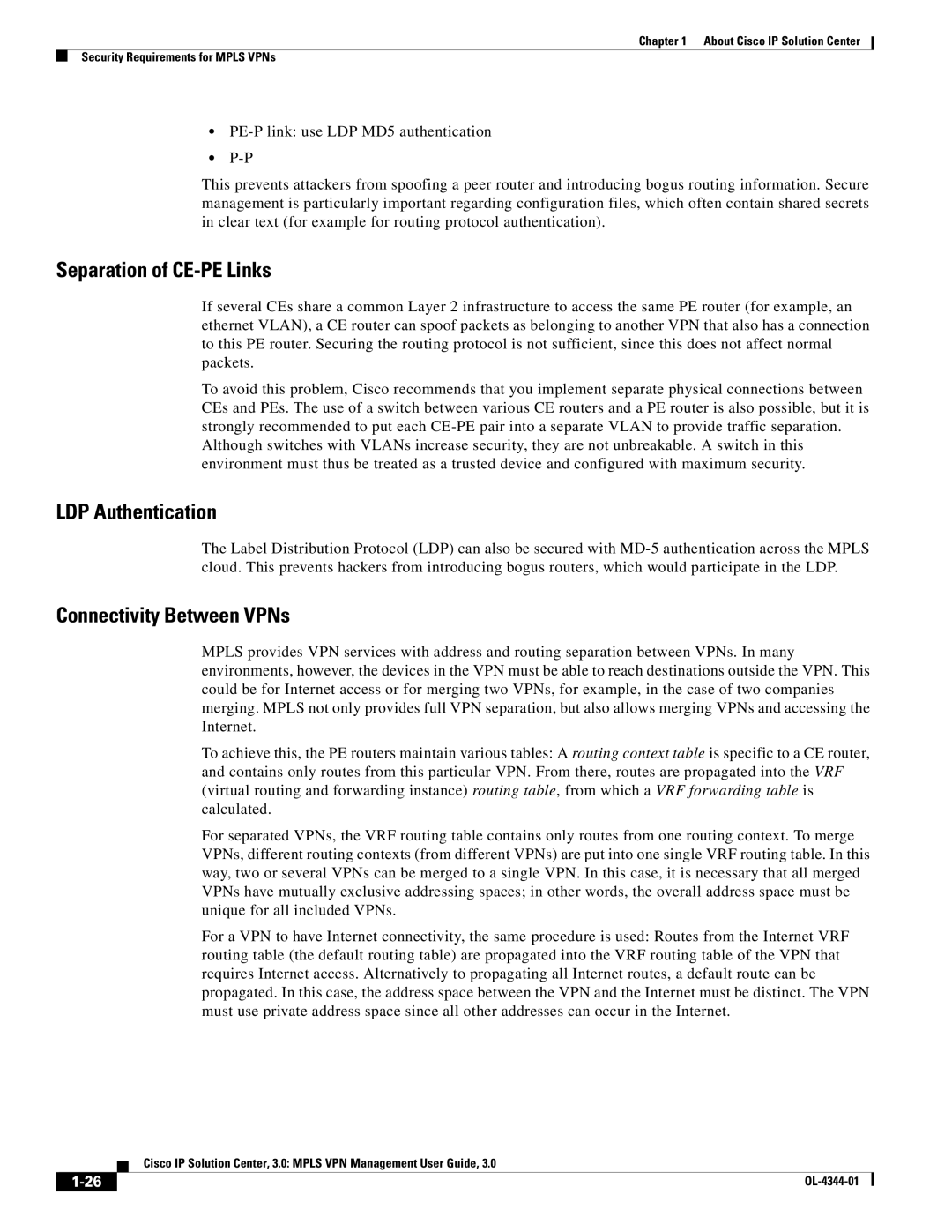
Chapter 1 About Cisco IP Solution Center
Security Requirements for MPLS VPNs
•
•
This prevents attackers from spoofing a peer router and introducing bogus routing information. Secure management is particularly important regarding configuration files, which often contain shared secrets in clear text (for example for routing protocol authentication).
Separation of CE-PE Links
If several CEs share a common Layer 2 infrastructure to access the same PE router (for example, an ethernet VLAN), a CE router can spoof packets as belonging to another VPN that also has a connection to this PE router. Securing the routing protocol is not sufficient, since this does not affect normal packets.
To avoid this problem, Cisco recommends that you implement separate physical connections between CEs and PEs. The use of a switch between various CE routers and a PE router is also possible, but it is strongly recommended to put each
Although switches with VLANs increase security, they are not unbreakable. A switch in this environment must thus be treated as a trusted device and configured with maximum security.
LDP Authentication
The Label Distribution Protocol (LDP) can also be secured with
Connectivity Between VPNs
MPLS provides VPN services with address and routing separation between VPNs. In many environments, however, the devices in the VPN must be able to reach destinations outside the VPN. This could be for Internet access or for merging two VPNs, for example, in the case of two companies merging. MPLS not only provides full VPN separation, but also allows merging VPNs and accessing the Internet.
To achieve this, the PE routers maintain various tables: A routing context table is specific to a CE router, and contains only routes from this particular VPN. From there, routes are propagated into the VRF (virtual routing and forwarding instance) routing table, from which a VRF forwarding table is calculated.
For separated VPNs, the VRF routing table contains only routes from one routing context. To merge VPNs, different routing contexts (from different VPNs) are put into one single VRF routing table. In this way, two or several VPNs can be merged to a single VPN. In this case, it is necessary that all merged VPNs have mutually exclusive addressing spaces; in other words, the overall address space must be unique for all included VPNs.
For a VPN to have Internet connectivity, the same procedure is used: Routes from the Internet VRF routing table (the default routing table) are propagated into the VRF routing table of the VPN that requires Internet access. Alternatively to propagating all Internet routes, a default route can be propagated. In this case, the address space between the VPN and the Internet must be distinct. The VPN must use private address space since all other addresses can occur in the Internet.
Cisco IP Solution Center, 3.0: MPLS VPN Management User Guide, 3.0
| ||
|
